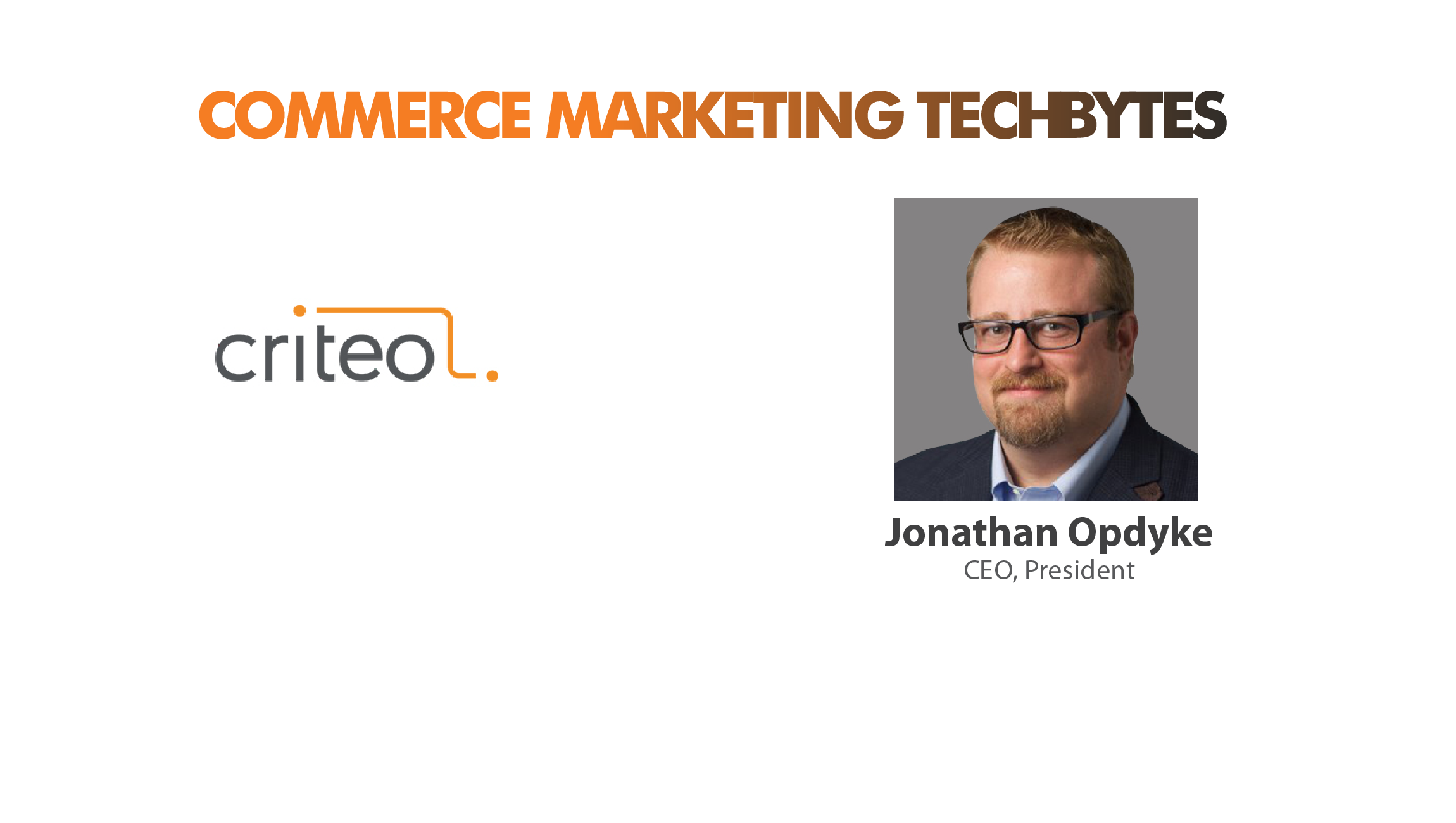Jonathan Opdyke
President, Brand Solutions, Criteo
In May, Criteo launched the Criteo Direct Bidder, a header bidding technology that directly connects publishers’ inventory to the demand from Criteo’s extensive base of more than 15,000 clients globally. We spoke to Jonathan Opdyke, President, Brand Solutions, Criteo to understand how Criteo plans to tackle the challenges of marketing attribution.
Html code here! Replace this with any non empty text and that's it.
MTS: Tell us about your role in Criteo and the team you handle?
Jonathan Opdyke: In 2004, I co-founded and ran HookLogic which Criteo purchased nearly a year ago. Today, as President of Brand Solutions at Criteo I’m focused on expanding Criteo Sponsored Products (HookLogic) and adding new products focused on brands by leveraging Criteo’s technology and footprint. Our focus is two-fold: providing performance marketing solutions for brands with closed-loop attribution and helping retailers leverage brand funds to monetize their e-commerce channel and drive new traffic to their sites. Additionally, I oversee corporate development and strategy for Criteo.
MTS: How does Criteo leverage predictive intelligence to connect customer’s offline and online behavior?
Jonathan: Criteo is working to make offline data a larger part of all our solutions, both to improve predictive algorithms and to broaden measurement. Connectivity to offline data starts with leveraging our user graph to onboard offline sales data and achieve a high match rate to online users. The purchase data informs an emerging Criteo feature that dynamically targets ads to recent offline buyers, recommending related products to encourage new online purchases. We are also developing solutions that connect online actions to offline purchase activity, both to increase attribution measurement and to inform predictive models to serve better ads. We see offline data as an underpinning of our recently introduced Commerce Marketing Ecosystem, a growing set of pooled assets designed to help our clients compete. Each year we track over $550 billion in online sales; offline data dramatically changes the scale and potential impact for participants in the ecosystem.
MTS: How would Criteo Commerce Marketing Ecosystem solve the underlying challenges of marketing attribution?
Jonathan: One key component of the Criteo Commerce Marketing Ecosystem is our user graph, built on a voluntary collective of our clients. The user graph enables recognition of the same shoppers across devices and offline, enabling much broader sales attribution as shoppers shop and buy in different places. Most attribution models can’t make these connections.
For brands, that sell across many retailers, attribution has always been a challenge given the sales data is held by the retailers. Criteo Sponsored Products created a virtuous cycle of data sharing by retailers, enabling a unique window into sales data. With Criteo Brand 360, brands can connect advertising to SKU-level sales across retailers, devices, and increasingly to offline channels. This broader attribution gives an extensive view of performance to brands, while increasing brand contribution to retailer monetization and marketing subsidization. The more participants in the ecosystem, the more these benefits accrue to all.
MTS: Could you provide a sneak preview into how Criteo’s Engine which consists of user valuation, kinetic design and product recommendations, simplifies people-based marketing ?
Jonathan: The Criteo Engine starts by valuing a particular user based on their likelihood to click and buy with one of our clients, determining whether it is economically justified to serve them an ad. Kinetic Design builds on-brand ads that are contextually optimized for every consumer and rendered in real-time without the need to define ad sizes or layouts upfront. The Criteo Engine determines which products to recommend to the user based on contextual browsing behavior, showing both products the user looked at and related products they are likely to have an affinity for.
Expansion from our roots in Criteo Dynamic Retargeting to Criteo Sponsored Products and Criteo Predictive Search enables us to touch more points of the customer journey in addition to the programmatic media landscape, to now include personalized ads on ecommerce sites, as well as Google Shopping. Our user graph binds these experiences together, enabling Criteo to deliver both highly personalized and effective ads for our clients, while providing a unified shopper experience.
Finally, the Criteo Engine is evolving to leverage pooled data made possible by client participation in the Criteo Commerce Marketing Ecosystem. In the past, the engine relied on a contextual signal to trigger a campaign, such as a visit to a product page on a website. Increasingly, the engine can learn shopper behaviors and make predictions about their interests, triggering campaigns without a specific in-market signal, such as a suggestion to try a product or brand that is similar to purchases made in the past. Advertiser campaigns become automatically people based, rather than treating people in each environment without knowledge of their behaviors in other environments.
MTS: What’s the future of Predictive Bidding in the e-commerce industry? Do you see it exploding like programmatic advertising by 2020?
Jonathan: We see commerce growing quickly to join search and social as the third major pillar of digital marketing. As commerce accelerates as a marketing medium, more capabilities will become biddable as high demand makes bidding the fairest way to reflect market value. Criteo Sponsored Products pioneered predictive bidding in ecommerce by enabling brands to bid for placement within retail sites. Platforms like Amazon and Alibaba have become vibrant advertising marketplaces. Google Shopping only really took off when it became a biddable marketplace, few retailers paid attention to it when it was free. Ultimately, the market follows the consumer who not only buys online, but researches heavily online before visiting stores. Every digital touchpoint is an opportunity to influence that buying process and the advertising industry is only just beginning to recognize its value.
MTS: How deep is Criteo into AI/ML? How do you see AI/ML transforming commerce marketing in next 4-5 years?
Jonathan: The foundation for our business is machine learning. Our powerful machine learning technology, which we call the Criteo Engine, is our largest research and development focus as a company. It was specifically designed for commerce and has reached an unmatched level of sophistication in transforming shopping data into sales.
As Artificial Intelligence advances, access to large data sets to train predictive models will become increasingly important. The challenge for most ecommerce sites is their volume of accessible data is limited, particularly in comparison to Amazon. This is why Criteo Commerce Marketing Ecosystem is important – not just for the immediate term benefits of more accurate attribution and people-based marketing, but for the future capability to apply vast amounts of data to AI-driven prediction models that will deliver vastly more effective advertising for participants.
MTS: Thanks for chatting with us, Jonathan.
Stay tuned for more insights on marketing technologies. To participate in our Tech Bytes program, email us at news@martechseries-67ee47.ingress-bonde.easywp.com











